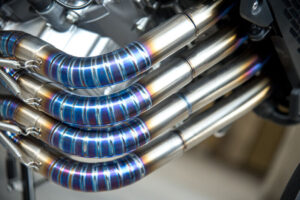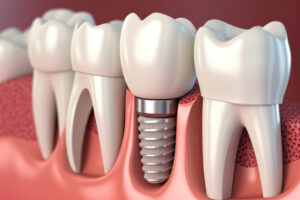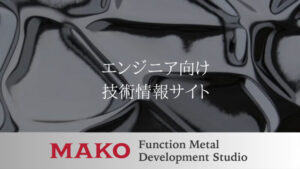On this site, we mainly introduce decorative titanium designs. But first, let’s discuss what titanium is.
Titanium plays a significant role in many industries due to its strength, lightness, and corrosion resistance.
Compared to common steel materials and aluminum, titanium has a density of 4.5 g/cm³, making it lightweight, and its strength is exceptionally high.
Especially, its strength and corrosion resistance at high temperatures make it invaluable in the aerospace and automotive industries for engine part manufacturing.
contents
Corrosion Resistance of Titanium
Titanium has high resistance to seawater and saltwater, with minimal degradation due to corrosion. This has expanded its applications in the marine and chemical industries.
It is also suitable for use in situations where structures are exposed to significant forces, and thus, it’s utilized in the construction and aerospace industries.
Specific Strength of Titanium
The specific strength of titanium, which is the material’s strength divided by its density, is also very high, showing its peak value at high temperatures. This makes titanium a stronger material for the same weight, leading to its use in many industries.
About Titanium Processing
However, due to its strength and hardness, processing titanium is challenging, especially welding, which requires specialized techniques. Furthermore, processing at high temperatures increases the cost. In particular, alloyed titanium is challenging to machine, almost equivalent to stainless steel in sheet metal processing.
〈Please refer to this article as well〉
Impact of Titanium on Daily Life
The unique properties of titanium influence our daily lives. For instance, its non-magnetic nature is utilized in electronic and precision equipment, its corrosion resistance in marine development and marine environments, and its biocompatibility in the medical field. Titanium, represented by the elemental symbol “Ti”, is a silvery-gray metal element first discovered in England in 1790. Later, in 1910, it was introduced as a metal, and by 1946, it was commercialized, with its applications now being widespread.
Characteristics and Uses of Titanium

Among all its excellent properties, titanium’s strength and lightness are particularly important in the manufacturing of aircraft, automobiles, and buildings.
Furthermore, titanium does not rust even when exposed to seawater or saltwater. This is due to titanium’s ability to react with oxygen and form an oxide film on its surface. This corrosion resistance is a significant advantage in marine development, the chemical industry, and long-lasting construction.
Weaknesses of Titanium
On the other hand, the challenges in processing titanium due to its strength and hardness, and the need for high temperatures during processing, are its weaknesses. Special tools and techniques are required, and when heated, it easily reacts with oxygen and nitrogen, necessitating welding and other operations to be performed under special conditions.
Applications of Titanium

The applications of titanium are vast, ranging from parts for aircraft and automobiles to medical instruments, jewelry, and sports equipment.
In the medical field, titanium’s biocompatibility is valued, and it is widely used in artificial joints and dental implants.
Conclusion
This has been an overview of the characteristics and applications of titanium.
Due to its strength, lightness, and corrosion resistance, titanium plays a significant role in various aspects of our daily lives. It also has a significant presence in the field of interior and exterior construction.
Please also visit these sites
〈Website on the functionality of metals〉

